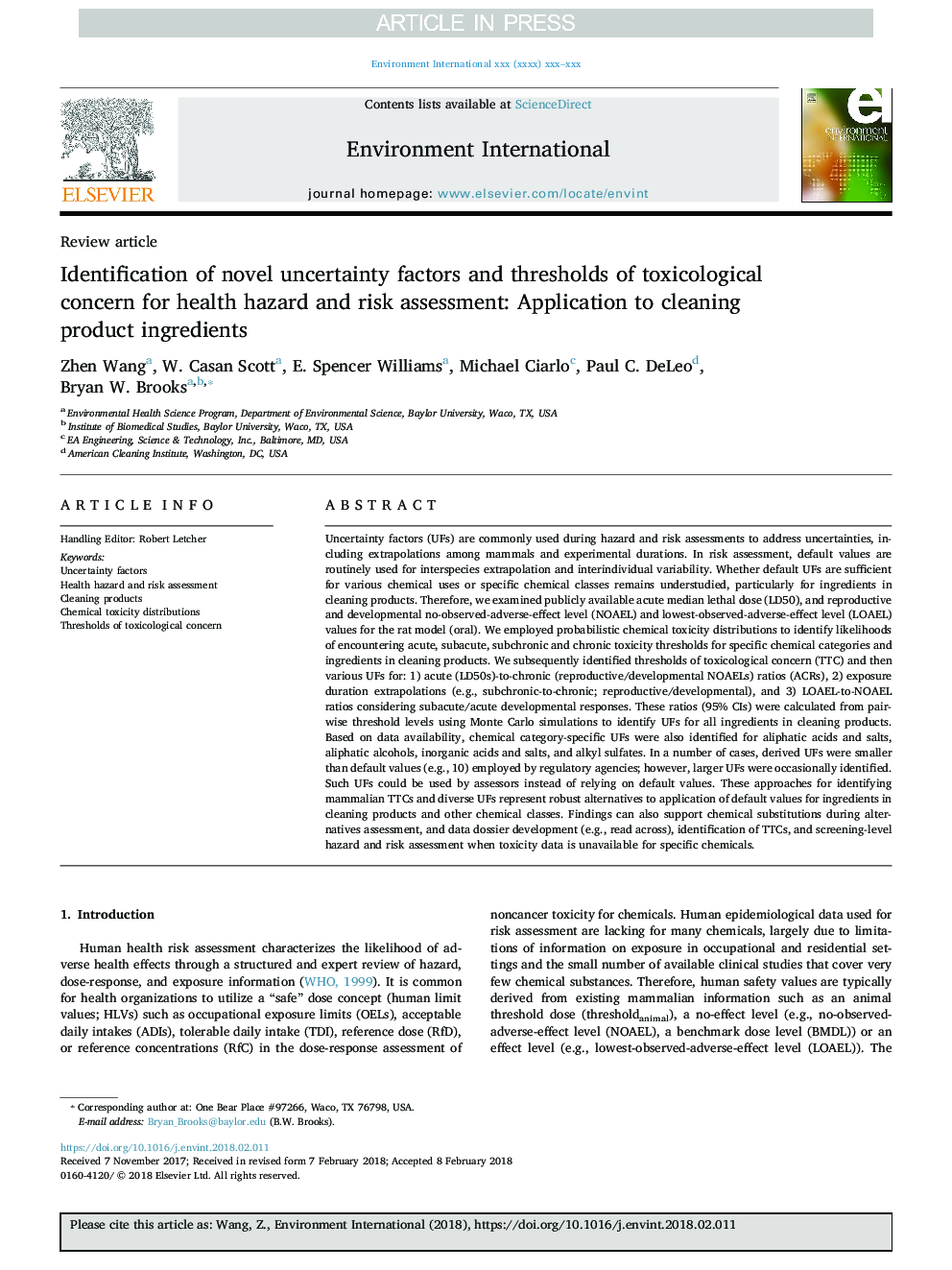| کد مقاله | کد نشریه | سال انتشار | مقاله انگلیسی | نسخه تمام متن |
|---|---|---|---|---|
| 8855317 | 1619017 | 2018 | 20 صفحه PDF | دانلود رایگان |
عنوان انگلیسی مقاله ISI
Identification of novel uncertainty factors and thresholds of toxicological concern for health hazard and risk assessment: Application to cleaning product ingredients
ترجمه فارسی عنوان
شناسایی عوامل جدید عدم قطعیت و آستانه نگرانی سمی در مورد خطر سلامت و ارزیابی ریسک: درخواست برای تمیز کردن مواد تشکیل دهنده محصول
دانلود مقاله + سفارش ترجمه
دانلود مقاله ISI انگلیسی
رایگان برای ایرانیان
کلمات کلیدی
عوامل عدم اطمینان، خطر سلامت و ارزیابی ریسک، محصولات پاک کننده، توزیع سمیت شیمیایی، آستانه های نگرانی سمی،
موضوعات مرتبط
علوم زیستی و بیوفناوری
علوم محیط زیست
شیمی زیست محیطی
چکیده انگلیسی
Uncertainty factors (UFs) are commonly used during hazard and risk assessments to address uncertainties, including extrapolations among mammals and experimental durations. In risk assessment, default values are routinely used for interspecies extrapolation and interindividual variability. Whether default UFs are sufficient for various chemical uses or specific chemical classes remains understudied, particularly for ingredients in cleaning products. Therefore, we examined publicly available acute median lethal dose (LD50), and reproductive and developmental no-observed-adverse-effect level (NOAEL) and lowest-observed-adverse-effect level (LOAEL) values for the rat model (oral). We employed probabilistic chemical toxicity distributions to identify likelihoods of encountering acute, subacute, subchronic and chronic toxicity thresholds for specific chemical categories and ingredients in cleaning products. We subsequently identified thresholds of toxicological concern (TTC) and then various UFs for: 1) acute (LD50s)-to-chronic (reproductive/developmental NOAELs) ratios (ACRs), 2) exposure duration extrapolations (e.g., subchronic-to-chronic; reproductive/developmental), and 3) LOAEL-to-NOAEL ratios considering subacute/acute developmental responses. These ratios (95% CIs) were calculated from pairwise threshold levels using Monte Carlo simulations to identify UFs for all ingredients in cleaning products. Based on data availability, chemical category-specific UFs were also identified for aliphatic acids and salts, aliphatic alcohols, inorganic acids and salts, and alkyl sulfates. In a number of cases, derived UFs were smaller than default values (e.g., 10) employed by regulatory agencies; however, larger UFs were occasionally identified. Such UFs could be used by assessors instead of relying on default values. These approaches for identifying mammalian TTCs and diverse UFs represent robust alternatives to application of default values for ingredients in cleaning products and other chemical classes. Findings can also support chemical substitutions during alternatives assessment, and data dossier development (e.g., read across), identification of TTCs, and screening-level hazard and risk assessment when toxicity data is unavailable for specific chemicals.
ناشر
Database: Elsevier - ScienceDirect (ساینس دایرکت)
Journal: Environment International - Volume 113, April 2018, Pages 357-376
Journal: Environment International - Volume 113, April 2018, Pages 357-376
نویسندگان
Zhen Wang, W. Casan Scott, E. Spencer Williams, Michael Ciarlo, Paul C. DeLeo, Bryan W. Brooks,
